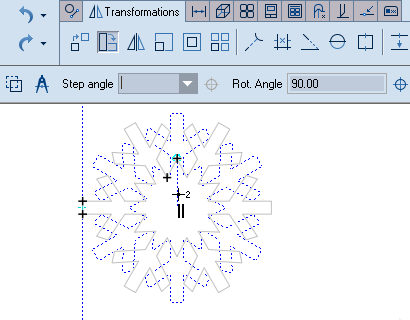When you are performing the Transformation modes translation, scaling, mirroring or rotation, the program automatically begins detecting relations only with the objects the mouse pointer passes through (pointed-to objects). Each time the mouse pointer passes through an object, EngView indicates this object by adding little crosses at its ends. These marks tell us that the program will detect relations only with these objects.
The following is an example of how the program performs the indication of relations with pointed-to objects in the rotation transformation. The functionality works in an analogous manner in the modes scaling, mirroring and translation.
We will rotate a snowflake with respect to its center.
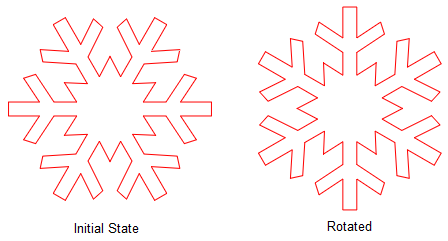
Notice how as we are moving the mouse pointer toward the center of the shape, EngView marks as pointed-to the objects the mouse pointer passes through. These objects are visualized by little crosses at the ends of the objects. The indications tell us that the program will detect relations only with these objects.
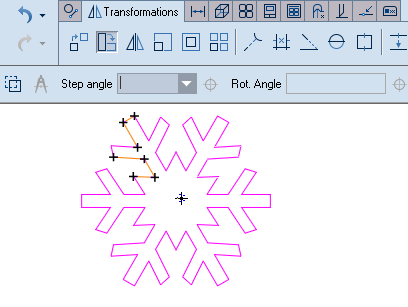
Yet the currently marked objects will not help us easily locate the center of the snowflake. That is why we will clear the little cross marks so that they do not stand in the way.
Notice that the cross marks have disappeared.

Now we will set a new group of object we'll point to. In the current case, two lines will be enough for easily locating the center of the snowflake.
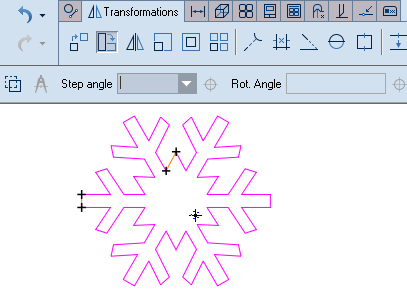
Notice how the relations the program detects as we are moving the mouse pointer help us position the mouse pointer at the center of the snowflake.
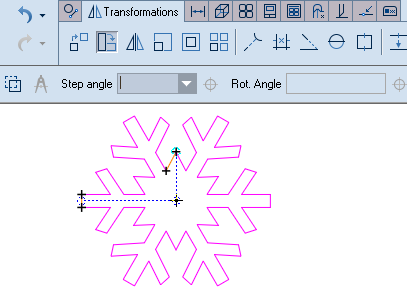
Notice that at this juncture the program still displays relations only to the objects that we touch with the mouse pointer.
